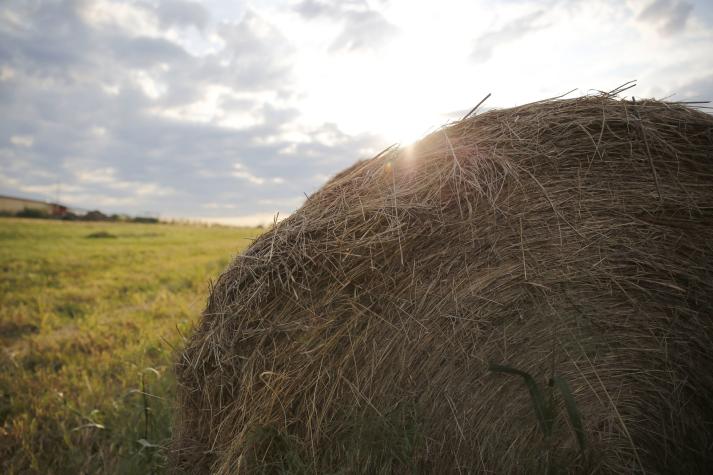COLUMBIA, Mo. – For yield and quality, May is the best time to harvest cool-season grasses, says University of Missouri Extension state forage specialist Harley Naumann.
May is when cool-season grasses transition from the vegetative stage to the reproductive stage. Many grasses such as tall fescue, orchard grass and Kentucky bluegrass are already flowering in parts of Missouri.
Cut before seeds develop for best results. “Once they go into the reproductive stage, the leaf-to-stem ratio decreases, fiber content increases, and there is an overall decline in nutritive value,” says Naumann.
In short, they become tougher and less nutritious.
Waiting too long is losing proposition
The longer you wait to mow beyond the transition stage, the poorer the quality of the hay. “Given the cost of making hay, waiting too long and producing a poor-quality product is a losing proposition,” says Naumann.
An early cut removes the reproductive tillers and encourages healthy regrowth headed into summer. When the cutting is too short, forages may not grow as well, and weeds may take hold when summer heat and dryness hit.
An early cut helps to reset pastures for fall regrowth and better-quality hay. If you wait, cool-season grasses go into summer slump with little growth in July and August.
Short cuttings mean weeds, toxicity risk
Cut, but don’t cut too short, says Naumann. He recommends cutting about 3.5-4 inches for best quality. Cutting too short can stress the plant and allow weeds to encroach.
Cutting higher retains more leaf material for photosynthesis, causing plants to rely less on root reserves for regrowth. Plants depend on strong root systems, especially during dry periods.
“Overall, this leads to more vigorous plants that have a better chance of outcompeting undesirable weeds and therefore increases persistence,” says Naumann.
Prolonged practice of cutting too short results in thin stands in the future.
Also, the lowest 2 inches of tall fescue is the least nutritious and contains the most endophytes, putting livestock at risk in toxic Kentucky 31 fescue fields. Additionally, equipment is more at risk of damage when it comes into contact with soil, gravel and rocks, which puts more grit and dirt into the hay.
Store correctly to prevent losses
Once hay is harvested, proper storage is critical to protect your investment. Ideally, hay is stored off the ground or on a concrete slab and under cover. Producers can expect as much as 40% dry matter loss from hay stored in contact with the ground and uncovered, compared to 10% for hay stored inside or on a rack with a cover.
For more information, see MU Extension publication “Making and Storing Quality Hay,” available free online, or consult your local MU Extension agronomist.
